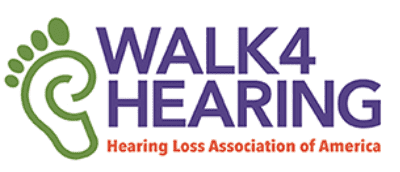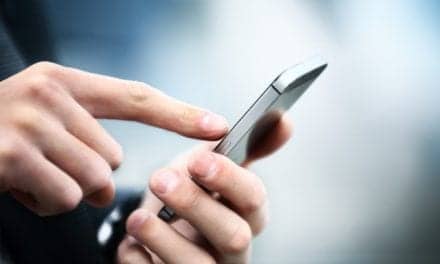Hearing care professionals can distinguish their services from over-the-counter devices by focusing on advanced hearing aid features for public accessibility.
By Thomas Kaufmann, MS
Have you ever considered the full spectrum of experiences your clients encounter daily with their hearing aids? From the quiet conversations at home to the bustling sounds of a city street, their world is filled with auditory challenges. But there’s one aspect that’s often overlooked, and it’s where you, as a hearing care professional, can truly shine. It’s time we talk about “Public Access Ready” hearing aids—a term you might not be familiar with yet, but one that could redefine you practice’s success.
As a hearing care professional, you’re navigating a changing landscape. While over-the-counter (OTC) hearing solutions haven’t taken over the market yet, their presence is growing, subtly shifting the traditional model of hearing aid delivery. You’re not just competing with other professionals; you’re up against a growing market of DIY solutions. In their quest for convenience and affordability, all but one of the OTC options available today overlook a crucial aspect of hearing enhancement: true accessibility in public settings. And this is where you come in.
Two Clients, Two Experiences, One Critical Difference
Imagine one of your clients coming in for a follow-up visit. They’re beaming with joy and can’t wait to share what happened last weekend. “You won’t believe it,” they begin excitedly, “I went to church, and for the first time in years, I could hear everything so clearly.”
They had noticed a sign indicating the church was equipped with a hearing loop system. Curious, they opened the smartphone app for their hearing aids, selected the “Public Access” program, and sat down. As the service commenced, they were enveloped in crystal-clear sound, capturing every word, every nuance of the sermon with remarkable clarity. The ambient noises that usually muddled their hearing were no longer a barrier. “I heard the pastor blow the candle out,” your client exclaims. Their story isn’t just a testament to the technology; it’s a moment of true connection, of feeling part of a community they felt distanced from for so long.
The very next day, a new client walks into your doors. They already have hearing aids and are deeply engaged in local politics. “I need to be able to participate in city council meetings,” they explain, “but I’m struggling to hear clearly there.”
You listen as they recount their latest experience. The venue had a sign about an assistive listening system, so they approached a clerk for assistance. Initially, they were handed a pair of headphones, but they had to explain that they can’t really wear headphones over their hearing aids. The clerk then provided a neckloop, ostensibly a hearing aid-compatible solution. But the problem only intensified.
Your client, already feeling a bit overwhelmed, tried to use the neckloop with their hearing aids. They opened their smartphone app, but all they found were “Default” and “Restaurant” settings. Sitting in the audience, they struggled to make sense of the echoing voices, distorted by rustling papers and squeaking doors. The crucial discussions they came to follow were lost amidst a sea of ambient noise.
As you process their story, you realize the stark contrast to yesterday’s client. Two individuals, similar environments, yet vastly different experiences. Did you notice what the determining factor was?
Further reading: How Hearing Loops and Induction Coils Improve SNR in Public Spaces
ADA Compliance and Assistive Listening: Bridging the Gap
The Americans with Disabilities Act (ADA) plays a pivotal role in ensuring accessibility for individuals with hearing loss in public venues. Understanding its mandates is crucial for both public venues and hearing care professionals, but not all audiology patients are fully aware of the impact. Let’s explore what the ADA says and what it means in practice.
The ADA mandates that essentially any space with loudspeakers used for more than paging or background music must offer assistive listening, including headset receivers and neckloops to interface with telecoils. This requirement applies equally to permanent venues and temporary events, such as conferences, public lectures, cultural events, or outdoor movies. Essentially, if a space relies on amplified sound for communication or entertainment, it needs to facilitate assistive listening. Courtrooms need to provide assistive listening even when no loudspeakers are in use.
Now, how can a venue or temporary event make sure they meet these requirements? Three different technology options are available: hearing loop systems, FM systems, and infrared systems. A hearing loop system transmits sound directly from a venue’s sound system to hearing aids and cochlear implants equipped with telecoils, offering complete independence for the user. Users switch their hearing devices to the telecoil or hearing loop setting to connect seamlessly with the system. There’s no need to take initiative to seek out special equipment or to wear a conspicuous headset. With a simple button push, listeners enjoy customized sound through their own hearing devices.
FM systems use radio frequencies, and infrared systems use light to transmit sound. Both require listeners to borrow receivers from the venue. Users need a neckloop connected to the receiver if they have a telecoil in their hearing aids. Without a telecoil, they must rely on the provided headphones, either worn on top of or instead of their hearing aids, neither of which provides an adequate solution.
In theory, the ADA’s requirements should guarantee equal access to auditory information in public spaces. In practice, however, the reality hinges on two key factors: the type of assistive listening technology provided by the venue and the compatibility of the listener’s hearing device.
In all the scenarios we’ve discussed, from churches with hearing loops to council meetings with FM systems, there’s a common thread that determines whether your clients can fully engage with their environment. In each scenario, a telecoil is required for the listener to fully access the assistive listening system.
Further reading: Helping Children and Teens Benefit from Assistive Listening Technology
Rethinking Telecoils: Embracing “Public Access Ready” Technology
Let’s face it: many in our field argue that telecoils are a relic of the past, no longer needed in the era of Bluetooth and advanced streaming technologies. And in one sense, they’re right. The original purpose of telecoils—to facilitate clearer phone calls by picking up the electromagnetic signal from telephone handsets—has largely been superseded by Bluetooth streaming directly from smartphones.
But here’s where the misconception arises. The term “telecoil” itself, rooted in its initial application with telephones, has become something of a misnomer in today’s context. This outdated terminology can obscure the vital role this technology plays beyond phone calls. The functionality of telecoils has evolved far beyond their original purpose, yet the name has stuck, leading to confusion about their contemporary use.
To clarify this evolved functionality and realign our understanding with current needs, let’s introduce a more fitting term: “Public Access Ready.” This terminology shifts the focus from outdated telephone- centric connotations to the broader, crucial application of this technology: ensuring accessibility in public venues equipped with assistive listening systems. It underscores the capability of these hearing aids to interface seamlessly with public assistive listening systems, which can be found virtually everywhere, be it FM, infrared, or hearing loop systems. This term encapsulates the essence of what modern telecoils offer—the ability for individuals with hearing loss to fully engage with and participate in public events, lectures, worship services, and cultural activities.
When considering hearing aids, the debate often centers around size. However, by guiding clients to focus on telecoil-equipped “Public Access Ready” devices, you ensure they don’t just choose based on size, but on the ability to fully engage with the world around them. This approach balances aesthetics with the essential functionality that telecoils offer, making them an indispensable feature for comprehensive auditory access in public settings.
As a hearing care professional, you have the power to open up a world of sound for your clients. Imagine the joy of a grandparent attending their grandchild’s school play, not missing a single line of dialogue. Picture the fulfillment of a music lover experiencing every note at a live concert with crystal clarity. These aren’t just hypothetical scenarios; they are real possibilities with “Public Access Ready” hearing aids. Equipping your clients with this technology means offering them not just a device, but a gateway to richer, more inclusive experiences. It sets your practice apart by providing an essential feature that almost all OTC options lack, reaffirming your commitment to comprehensive care and full auditory access.
Further reading: Professional Hearing Services in the OTC Era
Auracast: A Glimpse into the Future of Assistive Listening
Just as you’re considering the crucial role of telecoils in “Public Access Ready” hearing aids, you might wonder about Auracast. This Bluetooth advancement offers the potential to broadcast audio to multiple hearing devices simultaneously. It’s envisioned as a solution that could replace or supplement current assistive listening systems, providing direct streaming to hearing aids, cochlear implants, and headphones. However, Auracast is still in its infancy. The first Auracast-compatible hearing aids have only just been introduced at the EUHA Congress in October 2023, and as of now, installations in public venues are non-existent. Therefore, widespread public access is still a distant reality.
You’re at the forefront of a hearing revolution, similar to the automotive world’s shift to electric vehicles (EVs). It’s been predicted that by 2035, all new cars sold will be electric. We can foresee a future where Auracast becomes a standard in hearing aids. If we apply a similar but slightly accelerated timeline, then maybe by 2030, most new hearing aids sold could be Auracast-compatible.
Most people replace their car every 4 to 8 years, slightly longer than the typical hearing aid replacement cycle of 3 to 7 years. With EVs, it’s assumed that 95% of cars on the road will be electric by 2050. For hearing aids, a complete transition might be seen a bit sooner. By 2040, perhaps even as early as 2035, most hearing aids in use could be Auracast-compatible.
But these projections are, of course, speculative assumptions. The path of technological adoption often takes unexpected turns, influenced by market trends and consumer preferences. It’s a reminder that while we anticipate future advancements, our planning must be rooted in today’s needs and realities.
Pioneering Accessibility in an Era of Technological Change
As Auracast begins its journey toward becoming a standard feature in hearing devices, public venues can take a proactive approach to ensure maximum accessibility. Installing both a hearing loop system and, once available, an Auracast transmitter would be the ideal strategy. This dual approach caters to the current widespread use of telecoils while paving the way for the future adoption of Auracast.
The emergence of electric vehicles hasn’t led to the immediate dismantling of gas stations. Similarly, just because Auracast-compatible devices are on the horizon, we shouldn’t hastily declare existing assistive listening technologies like hearing loops as outdated. These systems still play a critical role in providing auditory access today and will continue to do so for many years. Ensuring that both current and future needs are met is akin to maintaining both gas stations and EV charging points—it’s about providing inclusive options for all, regardless of where they are in the transition journey.
Again, it’s crucial to understand that telecoils are not just for hearing loop systems; they are the universal key to accessing all types of assistive listening systems. Whether it’s a hearing loop, an FM system, or an infrared system, a telecoil in the hearing aid is what bridges the gap between the user and these diverse technologies, ensuring complete auditory access in public venues.
As we stand at this crossroads of technological innovation and accessibility, it’s clear that the journey is as important as the destination. “Public Access Ready” hearing aids equipped with telecoils are not merely a temporary solution but a beacon of inclusivity in a world rapidly embracing change. They symbolize our commitment to ensuring no one is left behind as we stride toward a future filled with possibilities.
Remember, every step you take today toward enhancing accessibility paves the way for a more inclusive tomorrow. In this ever-evolving landscape of hearing care, your role is pivotal—one that goes beyond providing hearing solutions, to truly transforming the way people experience the world around them.
Thomas Kaufmann, MS, is the founder and chief technology officer of Otojoy and an innovator in assistive listening technologies. He holds post-graduate degrees in Physics (University of Bonn) and Chemistry (UC Santa Barbara) and is currently a PhD candidate in the Speech & Hearing Science (Auditory & Language Neuroscience) program at Arizona State University. His contributions to the field have been recognized with a CES Innovation Award and an Edison Award. He also actively contributes to international standards in electroacoustics as a member of the IEC’s Technical Committee 29
Photo: Dreamstime
Original citation for this article: Kaufmann T. How ‘Public Access Ready’ Hearing Aids Could Offer a Competitive Edge. Hearing Review. 2024;31(4):16-19.






This is terrific advice for professionals and consumers. Consumers need to hear everywhere and not be forced to choose between rechargeable hearing aids and a telecoil or cosmetically appealing hearing aids and a telecoil. Telecoils are not just used for hearing in a hearing loop but also to benefit from the thousands of FM and Infrared systems installed in theaters around the country that, by ADA law, must come with neckloops. Find more up-to-date information about Auracast, assistive listening, and telecoils at http://www.hearingloop.org
Thanks for this GREAT article Thomas. It points out the possibility for audiologists to actually differentiate their offering based on the fact they can provide public accessibily program in the hearing aids whereas that is not offered today in OTC. I can just also confirm the iimportance of public accessibility. My last hearing aids were Phonak Marvel LIfe but I could simply not get that form factor I wanted with telecoils and it became some misunderstanding so I thought they had telecoils. But I had NO access to theatres, cinamas, conference and was very limited in my use of hearing aids in public venues as hearing aids optimal range is around 10 feet (of course depening on background noise). Now the problem is fixed and I have telecoils (public access program is a great idea of wording) and my world opened up again!
Regarding Auracast and hearing loops you are right that we need hybrid systems for a long time. I have started talking about hearing access system (HAS) that includes hearing loop, monitor (so that everyone can understand and operate it easy), signage and potentially also Auracast in the futre.
Absolutely agree. This is a wonderful article for every audiologist to read and consider when selecting hearing instruments for their patients. As an audiologist and owner of an induction loop installation company telecoils are always discussed with every patient.